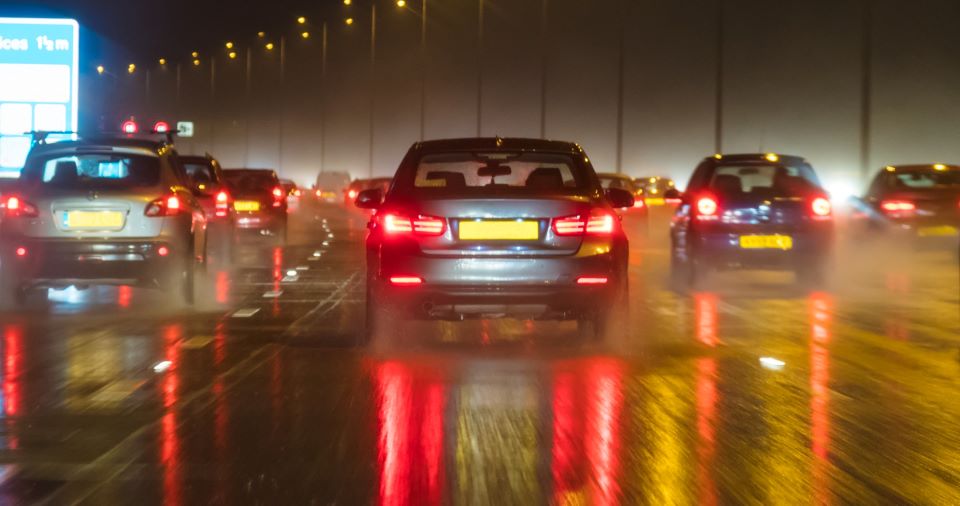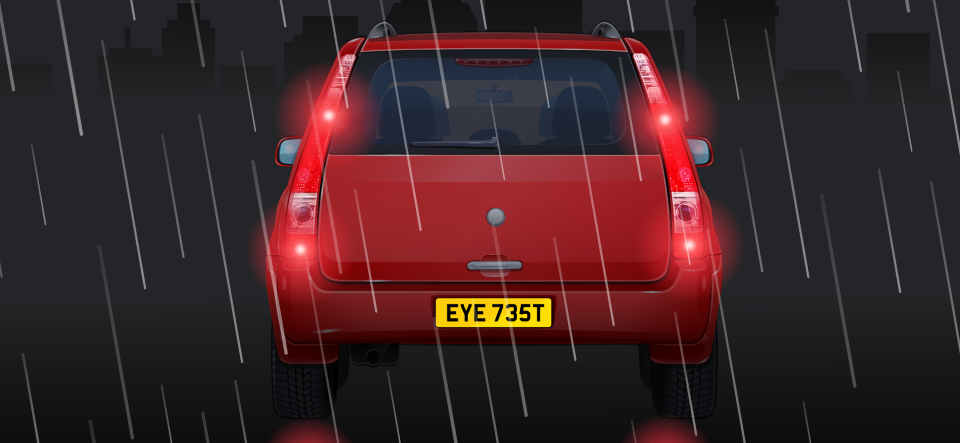This week is Road Safety Week. At DVLA, we take road safety very seriously – one of the ways we do this is by ensuring drivers meet the vision standards required by law to drive. This involves assessing drivers with visual disorders and encouraging all road users to regularly check their own eyesight.
As the dark winter months draw near, it’s important to be aware that fewer daylight hours and poor weather can lead to reduced visibility when driving. Therefore, meeting the minimum eyesight standard for driving is essential for being safe on the road.

Be a ‘Road Safety Hero’ this winter
This year’s Road Safety Week theme is ‘Road Safety Hero’ and it’s important to remember that everybody can be one this winter, including you.
Seasonal changes such as heavy rain, hail, sleet and snow, along with darker days, can all impact your vision when driving. Adverse weather is a challenge for all drivers, especially if you already have an eyesight condition.
Fog, ice on the windshield, and even glare from low sun can make driving more hazardous during the winter months. If you’re planning a journey this winter, whatever the distance or time of day, then be a ‘Road Safety Hero’ by being aware of the hazards before setting out.
Is your eyesight fit for driving?
No matter the weather or time of year, your eyesight must be fit for driving at all times. And remember – seasonal changes and poor weather aren’t the only things that can affect your vision.
Eyesight can naturally worsen over time, so make sure you have regular eye tests, at least every 2 years, or more often if your optician advises this. If you’re concerned about your vision, don’t wait for your next eye appointment – book a test with your optician as soon as you can. If you don’t meet the minimum eyesight standard, you must stop driving and tell DVLA.
If you need to wear glasses or contact lenses for driving, make sure you wear them every time you drive to stay safe and reduce the risk of accident, injury or damage to others on the road. In good daylight, drivers must be able to read, with glasses or contact lenses if needed, a car number plate made after 1 September 2001 from 20 metres.
Take the 20-metre number plate test
But how far away is 20 metres? You won’t have a measuring stick in the car with you! 20 metres is around the length of 5 parked cars, or the length of 2 double decker buses.

A survey by DVLA found that less than 50% of motorists are aware that they must read a number plate from 20 metres. That’s why we’ve launched a campaign to raise awareness of the 20-metre eyesight test. The number plate test is a simple and effective way to check if your eyesight meets the required standard for driving. Anyone can do the test at any time.
Visit our page on driving eyesight rules for more information, and check if you need to tell DVLA about your eyesight problem. Our driving eyesight rules are also available in Welsh on GOV.UK.
You can also visit Brake’s Road Safety Week campaign to find out how you can take action and become a ‘Road Safety Hero’ this winter.
15 comments
Comment by David Cane posted on
All good sense, unfortunately who will police it when we do not have enough policemen on the beat.
Comment by Mr Brian Rouse. posted on
It's good that you are making people aware that they need to check their eyesight regularly. I have had my eye test this year and all is fine.
Comment by Bill Thomas posted on
There is a need to also educate drivers of the need to dip headlights when approaching other vehicles with special emphasis on weather conditions
Comment by Tony posted on
I have my eyesight tested as requested by DVLA and wear my glasses when driving. The main problem with driving at night is when the cars have the new light bulbs fitted which even on dipped headlight dazzle you especially on the big 4x4s, even the optician who tested me admitted he sometimes has problems with them
Comment by Philip Hannam posted on
Totally agree, but those with bad eyesight will not admit it
Comment by Sue Williams posted on
Found the information most valuable particularly how to judge distance regarding reading a number plate Thank you
Comment by Ed posted on
Just as important ------ Once a week , clean the inside of the windscreen .
Comment by Mike Anderson posted on
And read the latest version of the Highway Code from time to time and take note of any changes
Comment by Lee posted on
More enforced eye test checks to keep driving entitlement are required.
Comment by Stuart Woods posted on
People who sit in traffic at night with the foot brake on especially when it is raining have no thought for the person behind. It is dazzling.
Comment by David Vickers posted on
Stop drivers parking on either side of the road with their head lights on when parked even for a few minutes, as this blinds on coming drivers
Comment by Richard Cole posted on
Yes, this is one of my pet hates
Comment by Cathrine Brown posted on
Encourage drivers to use thier indicators when turning into another street or driveway. Especially in bad weather
Comment by Eileen Horsfield posted on
I agree with all these comments and always wear my glasses for driving. The comment I would like to make is people not dipping their headlights on a dark night and especially when it's raining or even snowing.
Comment by Walid Alkass posted on
I quite agree. But unfortunately, most drivers do this bad habit of blinding the drivers behind with the brake lights full on!